Motorcycle Repair & Maintenance – 10k Service
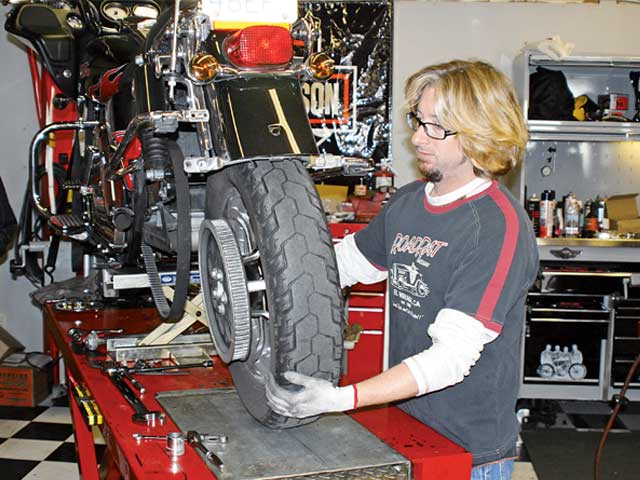
With the bike secured to a lift, the saddle bags were taken off, and the axle was removed so the rear wheel could be pulled from the swingarm and a new tire installed. When inspecting the tread on your OEM tires, the manual calls for tires to be replaced when tread depth measures less than 1/16 inch. Some other indications that a tire should be replaced are whether there’s a puncture or split whose distance or diameter exceeds 1/4 inch, a scratch or split in the sidewall, or any type of separation.
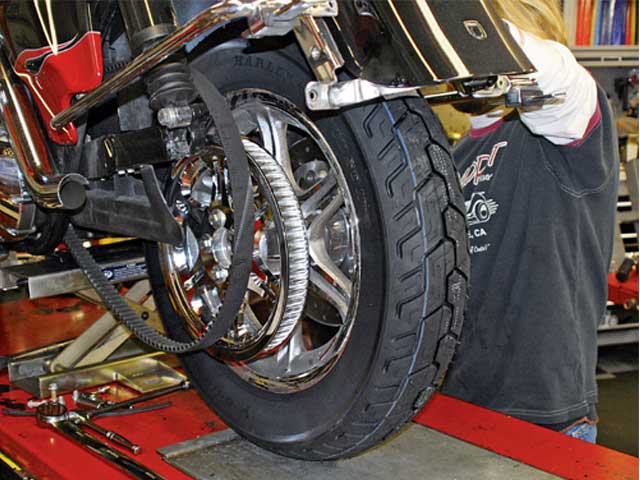
One way to see whether you have a loose spoke is to run a plastic pen (or anything else rigid that won’t scratch your spokes) around the spokes and listen for spokes that sound different from the rest (out of tune). It’s important to note that when installing new tires you need to make sure the correct tire is installed on the proper rim (front/rear) and the direction arrow faces the direction of wheel rotation.
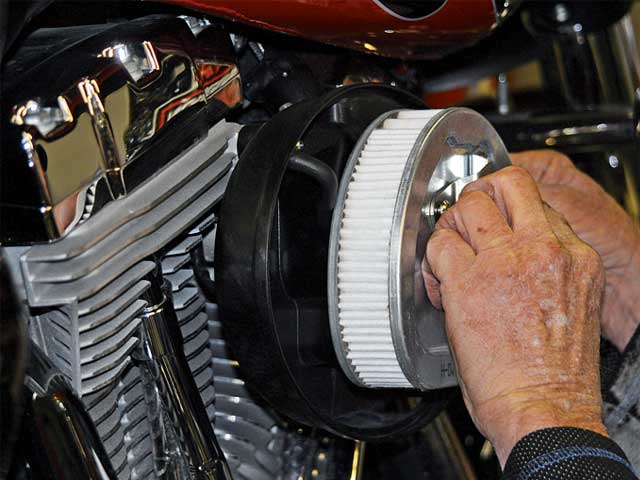
Most air cleaners can be easily cleaned, with some of the aftermarket companies offering their own air-filter cleaning/recharging kits. Your stock filter can be cleaned with lukewarm water, mild detergent, and gently using compressed air to dislodge dirt and debris trapped in the filter. Do not use solvent or gasoline to clean the filter, as the residual vapors may cause a fire or explosion when the filter is re-installed and the bike is running.
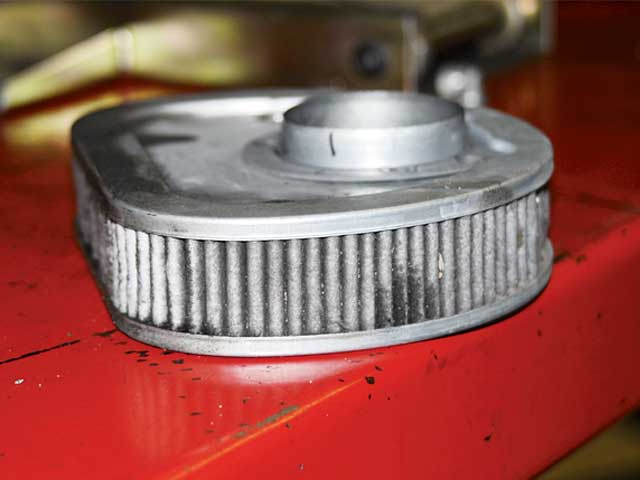
Your air cleaner is the primary line of defense in keeping dust and debris from entering your motor and damaging its internals. It’s important to inspect the air-cleaner element for cracks or tears. If there are cracks or tears, the filter should be replaced. A dirty air filter does you no good, either; it restricts the amount of air being pulled into the motor, which in turn has a negative effect on your motor’s horsepower-making abilities.
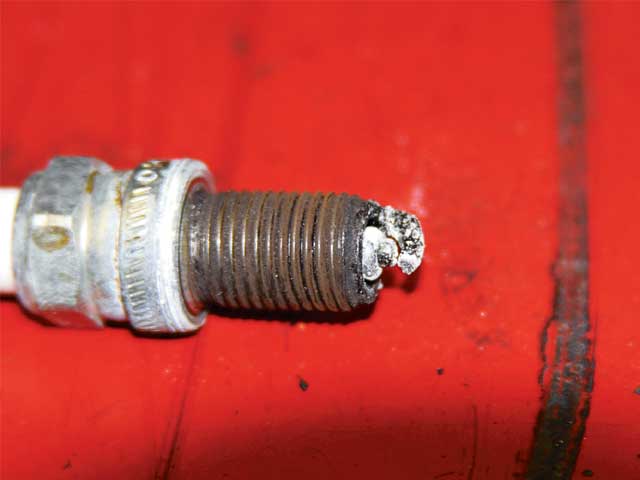
By closely examining your plugs you can tell if your air/fuel mixture is incorrect, your ignition isn’t operating correctly, or you are having pre-ignition problems or ignition timing problems. As you examine your plugs, make sure the porcelain isn’t cracked or broken, the electrode isn’t excessively eroded, and that there isn’t excessive carbon or oil fouling.
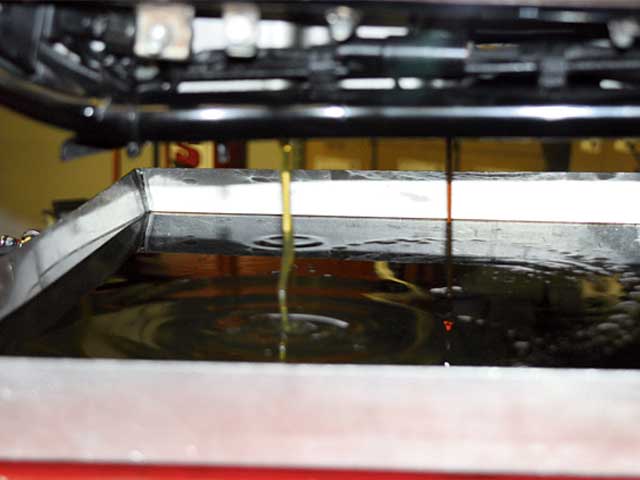
Take a quick 10-minute ride to get the bike and fluids warmed up. As the fluids are draining (engine, primary, and transmission), pay close attention to what is coming out. If there are chunks of metal and debris draining out, you may be looking at a bigger job than just a fluid change.
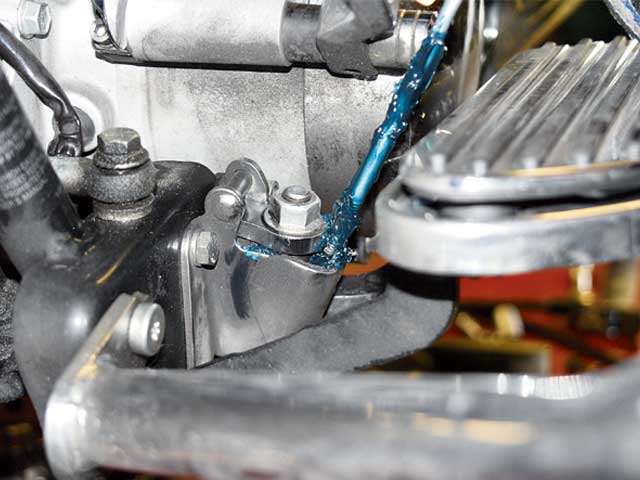
While the fluids are draining, it’s a good idea to lube up some of the other parts of the bike, such as the kickstand. Often neglected when it comes to maintenance but used every time you ride your bike, the kickstand is prone to getting hit by lots of pebbles and road debris. A little dab of grease in the mounting pocket will cure any creaks and will help the stand slide open and closed smoothly.
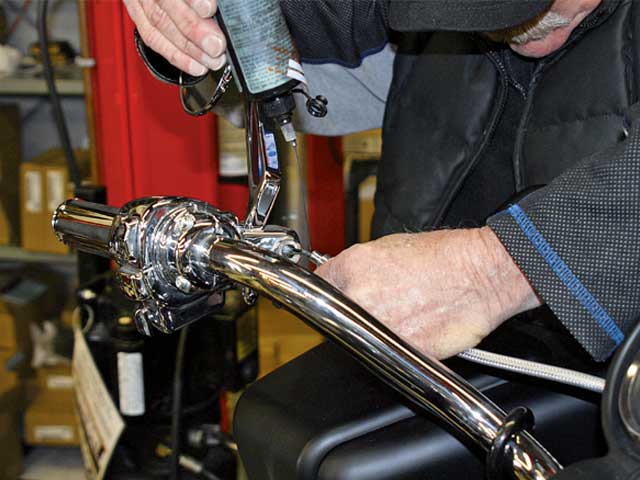
Proper lubrication of your cables will not only help them last longer but can also save your life. When lubricating your cables, be on the lookout for any fraying or sheath damage. You should check the brake-fluid level and the color of the fluid in your master cylinder(s) at this point as well.
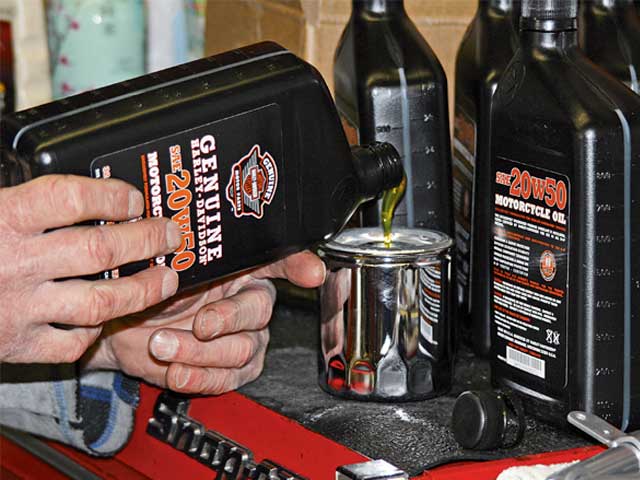
The important thing to remember is to use the correct viscosity for the anticipated ambient temperatures in which you will be riding (not engine temperatures). Do not use SH- or SJ-rated automotive oils; they are designed for automobiles. Before installing your new oil filter, be sure to fill it about halfway with fresh oil; this will ensure there’s a little oil in the case at startup. Also apply a thin layer of oil around the rubber gasket on the oil filter.
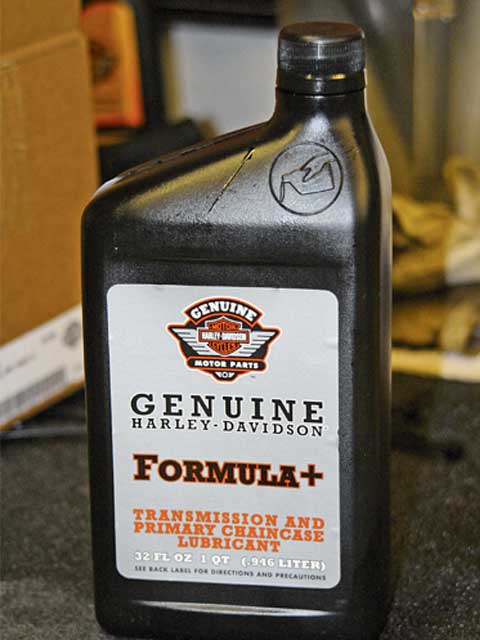
One of the newest lubricants to come from Harley-Davidson is the Formula + lubricant. Designed to be used in both your transmission and primary chaincase, Formula + is a proprietary mineral-base stock formula that provides the lubricity for the anti-wear requirements of the transmission gears.

Formula + also maintains the coefficient of friction for proper clutch operation and provides lubrication for the primary chain. However, this is NOT a 3-in-1 lubricant and should not be used in the crankcase as an engine lubricant.
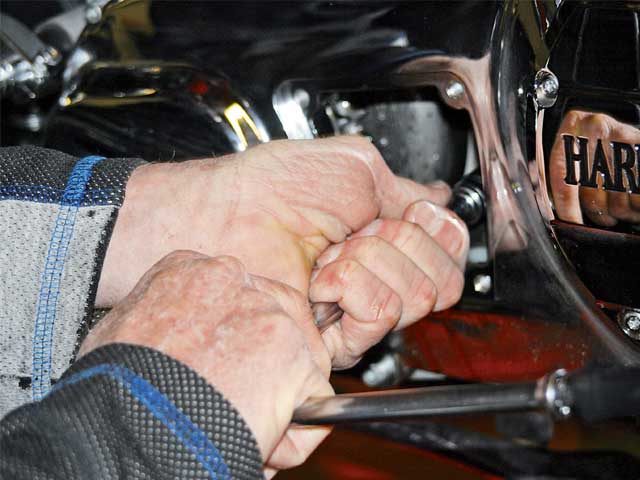
While you have the primary chain inspection cover off, you should check to make sure the chain has the proper amount of free play.
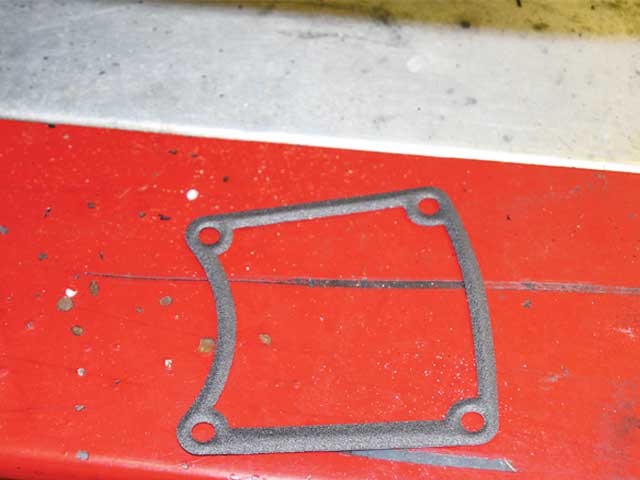
To prevent primary fluid leaks, you should use a new inspection cover gasket when installing the cover.
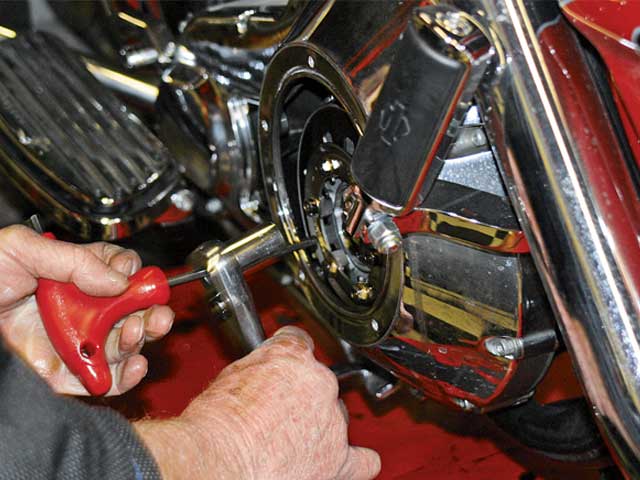
When lubricating your clutch cable, you should check the free play in the lever. Check and adjust the clutch when the bike is cold because the cable-adjuster clearance increases with engine temperature.
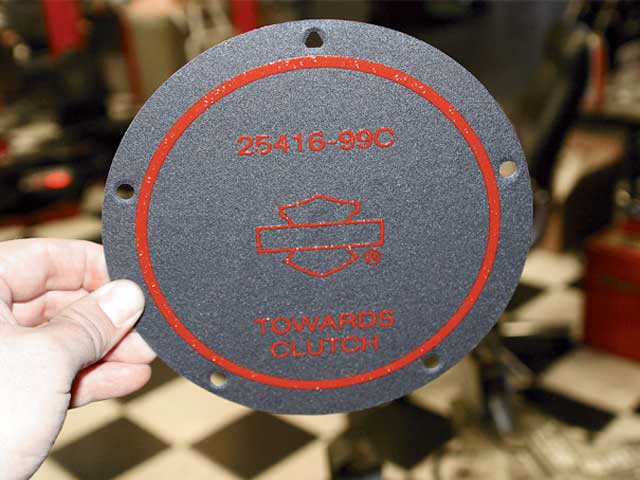
You should also replace the clutch cover gasket. Therefore, to reduce the possibility of leaking primary fluid, you should always use a fresh gasket.
We’ve all heard the old saying, “a little bit can go a long way.” And while this statement can pertain to just about anything from tips on saving for retirement to rationing water when stranded in the desert, it really rings true when talking about motorcycle maintenance. Sure, day in and day out the majority of us just jump in the saddle and hit the highway, never bothering to check tire pressure or inspect the spark plugs; most of us just assume our bikes will fire up and run great anytime, all the time. But without a little upkeep here and there, you’re bound to end up on the side of the road while your buddies continue on down the highway.
We’ve had our ’05 RG on loan from Harley for more than a year now, and in that time the bike has been from Southern California to South Dakota and many other places in between. We were getting ready to head out to Laughlin this past April for the River Run and noticed that the rear tire didn’t have much tread left, so we headed over to the H-D fleet center that houses the test bikes to get a new tire installed. With a little more than 11,000 miles on the odometer, the bike was overdue for its 10,000-mile service, so we decided to snap some photos to briefly show the basics and give some tips on what 10k service involves.
Obviously there are quite a few other things we didn’t cover that need to be addressed when performing a 10k service. For a full list of maintenance details and when they should be performed, you should pick up a service manual for the model year of your bike. The “Lubrication, Maintenance and Tune-Up” chapter at the front of the book is full of tips and information on what to do-and what not to do-when servicing your bike.







